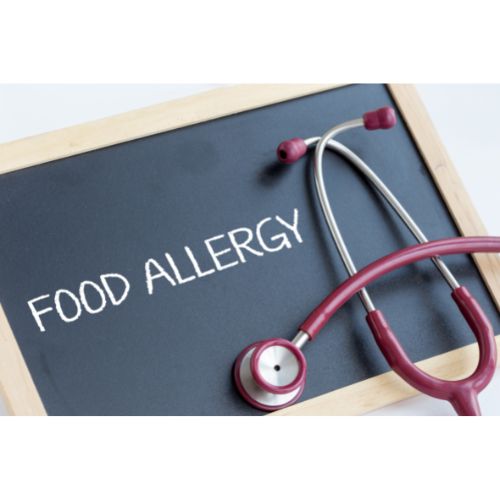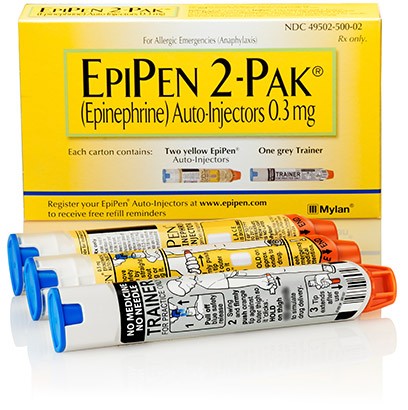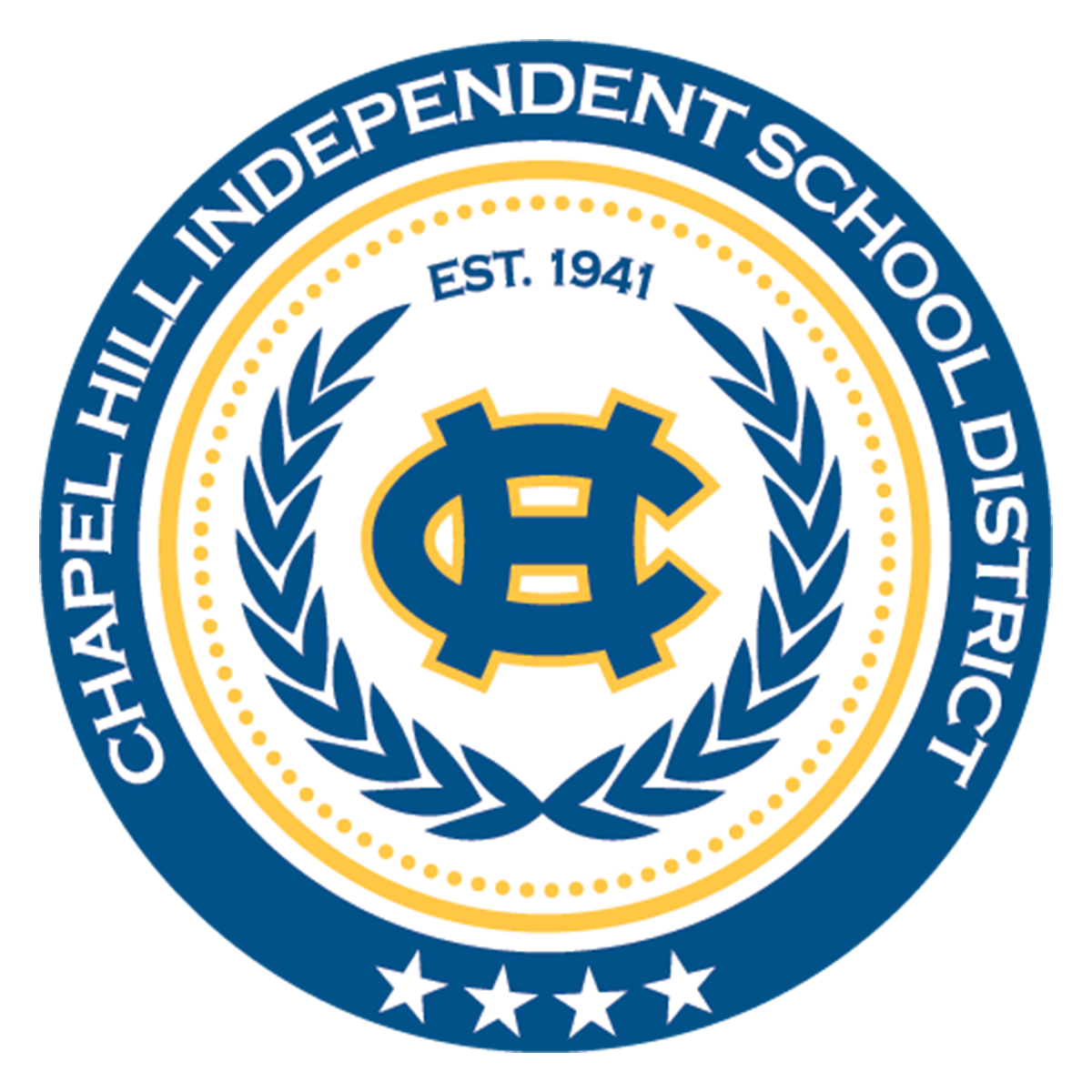Allergy and Seizure Plans
Health Services
Food/Environmental Allergy (including, but not limited to, peanut allergy)
Chapel Hill ISD food and/or environmental allergy Emergency Action Plans will be individualized for all students who have allergies and have completed the appropriate steps. Once notified by a legal guardian of a student's allergy and upon receipt of appropriate medications and a physician allergy plan, an Emergency Action Plan (EAP) is developed. The Emergency Action Plan is created from the physician's plan and includes what to look for and when/how to treat an anaphylactic reaction. The Emergency Action Plan is given and reviewed by any teacher, administrator, coach, counselor, cafeteria, transportation, and staff member that may have contact with the student during a school day. This ensures that all staff members working with the affected student, are trained to recognize and intervene in an allergic reaction. This will include training these staff members annually on how to use an Epi-Pen. The emergency response team in each school drills annually to hone their response skills. In the case of severe life-threatening allergies, the school principal will collaborate with the school nurse to send letters to other parents of the class requesting parents to voluntarily refrain from sending the allergen food in their child's belongings during school or for after-school activities, celebrations or parties (only on Elementary and Intermediate Campuses).
Depending on physical constraints within the school, the principal may designate a food-allergy-friendly area or lunch table. The Food and Nutritional service department, in collaboration with the parents and school nurse, will follow the CHISD regulation for food allergies and meal substitution, when applicable. However, a Statement Regarding Meal Substitutions or Modifications Form must be filled out with the campus nurse and physician. Hand-washing guidelines for staff and students are enforced. The custodial department will follow procedures that mandate the cleaning of surfaces daily. Non-food items may be adapted in the curriculum for those classes that have students with food allergies. While Chapel Hill ISD cannot guarantee an allergy-free environment at school, the district is committed to doing everything possible to ensure the safety of every child who has allergies.

Anaphylaxis
Anaphylaxis is a sudden, severe allergic reaction. The most dangerous symptoms include breathing difficulties, a drop in blood pressure or shock. Common examples of potentially life threatening allergies are those to food or stinging insects. Other allergic reactions may also occur to medications, latex or while exercising. The emergency treatment is epinephrine, which is usually supplied in Epi-Pens. This is for use by the nurse and trained staff members in case of unexpected anaphylaxis. Chapel Hill ISD has developed guidelines to manage students with these life threatening allergies so that they may safely participate in the educational process.
CHMS and CHHS students that qualify and are at risk for developing anaphylaxis are entitled to carry and self-administer their anaphylaxis medications (Epi-Pens). To quality to self carry, they have to meet the legal requirements below: The medication and the self-administration must be authorized by a physician or licensed health care provider and the appropriate forms turned in to the campus nurse. The student must demonstrate to the physician and to the campus nurse the skill level necessary to self-administer the medication.
Chapel Hill ISD has developed a school board policy that has the components of the legal requirements included within it. Please contact your campus nurse before enrollment or at the start of the new school year, to obtain all the proper paper work needed, that will help ensure the safety of your student with an allergy.

Seizure Plan:
Seizure Conditions
Sec. 38.032. SEIZURE MANAGEMENT AND TREATMENT PLAN.
(a) The parent or guardian of a student with a seizure disorder may seek care for the student's seizures while the student is at school or participating in a school activity by submitting to the school district at which the student is enrolled a copy of a seizure management and treatment plan developed by the student's parent or guardian and the physician responsible for the student's seizure treatment. The plan must be:
(1) on the form adopted under Subsection (b); and
(2) submitted to and reviewed by the district:
(A) before or at the beginning of the school year;
(B) on enrollment of the student, if the student enrolls in the district after the beginning of the school year; or
(C) as soon as practicable following a diagnosis of a seizure disorder for the student.
(b) The agency shall adopt and post on the agency's Internet website a form to be used in submitting a seizure management and treatment plan under this section. The form must request the following information:
(1) the student's name and date of birth;
(2) the names and contact information of the student's parent or guardian, the physician responsible for the student's seizure treatment, and at least one other emergency contact;
(3) any medical history significant to the student's seizure disorder;
(4) the type, length, and frequency of the student's seizures;
(5) a description of each type of seizure the student has experienced;
(6) the student's seizure triggers or warning signs;
(7) the student's ability to manage seizures and the student's level of understanding of the seizures;
(8) the student's response after a seizure;
(9) the basic first aid to be provided to the student during a seizure, including whether the student needs to leave the classroom after a seizure and the process for the student's return to the classroom, if applicable;
(10) a description of what constitutes a seizure emergency for the student;
(11) a description of seizure emergency protocol for district personnel to follow in the event of a seizure emergency for the student;
(12) a treatment protocol for any medications or other procedures to be administered by district personnel to the student during school hours, including:
(A) each daily or emergency medication, including:
(i) the name and dosage of the medication and the time at which the medication is to be given;
(ii) common side effects for the medication; and
(iii) any special instructions regarding the medication; and
(B) whether the student has a vagus nerve stimulator and, if so, appropriate magnet use for the stimulator;
(13) any special considerations or precautions applicable to the student; and
(14) the signatures of the student's parent or guardian and the physician responsible for the student's seizure treatment.
(c) The care of a student with a seizure disorder by a district employee under a seizure management plan submitted under this section is incident to or within the scope of the duties of the employee's position of employment and involves the exercise of judgment or discretion on the part of the employee for purposes of Section 22.0511.
(d) The immunity from liability provided by Section 22.0511 applies to an action or failure to act by a district employee in administering a medication, assisting with self-administration, or otherwise providing for the care of a student under a seizure management plan submitted for the student under Subsection (a).
